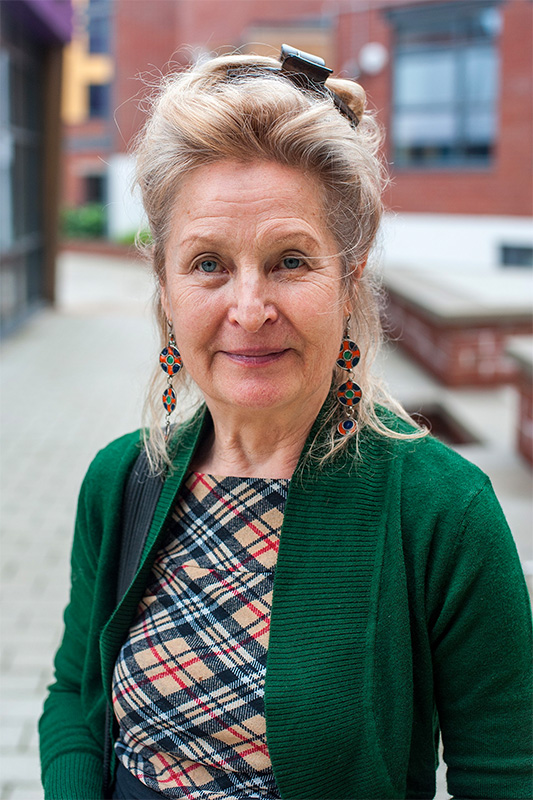Sirkka-Liisa Konttinen is a Finnish photographer who has worked in Britain since the 1960s. She was born in Myllykoski, municipality of Sippola (from 1975 part of the town of Anjalankoski, from 2009 part of the town of Kouvola), Finland in 1948. Konttinen became interested in photography at the age of 12 and was a member of a photography group in a nearby town. Intending to pursue photography as a career, she was apprenticed to a fashion photographer in Helsinki for a year. Konttinen studied photography in London in the 1960s, and cofounded the
Amber Collective, which moved to the northeast of England in 1969.
From 1969 Konttinen lived in Byker, and for seven years photographed and interviewed the residents of this area of terraced houses until her own house was demolished. She continued to work there for some time afterward. This resulted in the book
Byker, which in David
Alan Mellor's words
"bore witness to her intimate embeddedness in the locality". In 1980 she became the first photographer since the Cultural Revolution to have her work exhibited by the British Council in China.
Konttinen's next project was a study of girls attending dance schools in North Shields, their mothers, and the schools. The book
Step by Step came from this. The book was an influence for the film Billy Elliot.
Three years of photographing the beach between Seaham and Hartlepool resulted in the series
Coal Coast.
Konttinen later returned to Byker and photographed its new residents in colour.
Source: Wikipedia
Sirkka-Liisa Konttinen is a photographer and filmmaker, best known for her work documenting working-class life in North East England. She is also co-founder of the Amber Film and Photography Collective, based in Newcastle Upon Tyne and the Side Gallery, dedicated to socially engaged documentary photography.
Her documentation of Byker, the close-knit community of Newcastle, led to national recognition as a key photographic and filmic account of the rich working-class culture on the eve of its destruction. In 2003-09 she returned to the Byker Wall Estate that came to replace the original community, with her
Byker Revisited/Today I’m With You book and film. Konttinen’s other long-term projects include
Step by Step/Keeping Time,
Hoppings,
Writing in the Sand,
Letters to Katja and the
Coal Coast/Song For Billy. In 2011 her photography was inscribed in the
UNESCO UK Memory of the World Register.
She has exhibited widely, with her works held in multiple collections including the
Finnish Museum of Photography, Helsinki,
Museum of Fine Arts, Houston,
The New York Public Library,
Tate Modern, London,
Victoria and Albert Museum,
London and the AmberSide Collection Trust, Newcastle.
Source: Artimage
